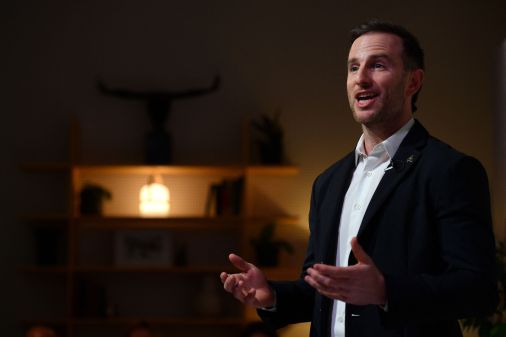Design without privacy is just a cover-up: USDS co-founder’s take on Trump’s EO

President Trump is famously obsessed with beauty and design, and his new executive order makes a big promise: government services that are not only usable, but visually appealing. It sounds like the right vision: anyone who has tried to fill out the federal application for student aid, get ahold of a human at the Social Security Administration, or navigate the labyrinth of federal help desks knows just how much time is wasted on terrible design.
But here’s the truth: whether “America by Design” succeeds or fails will depend less on words and more on execution. The difference between a beautifully written executive order and a beautifully designed service comes down to a few urgent measures.
Trump should start by rehiring the hundreds of top designers fired by DOGE earlier this year. The U.S. Digital Service (USDS), 18F, and digital service teams at agencies already employed world-class design talent, many of whom were recruited from the private sector and took pay cuts to serve their country. A number of them still hold active security clearances and even still have their equipment. They could be reinstated in a day, not months or years. Starting with new recruits from scratch will be glacial.
The president should also back the IRS’ Direct File program, and make it the model across government. Direct File, which allowed Americans to file their taxes simply and for free, was the most successful federal design project since the Hoover Dam. Hundreds of thousands of Americans used it and reported sky-high satisfaction rates; it also dramatically improved efficiency at the IRS. Killing it was a mistake. Trump should restore it immediately and use it as the blueprint for redesigning other essential services, from the federal student loan application to services for small businesses.
Third, the White House can fix the implementation of the Paperwork Reduction Act (PRA). The PRA was meant to reduce burden on the public, but in practice it’s a bottleneck with years-long approval cycles. For example, if there’s a way to substantively change a form to be easier for veterans — and even if everyone agrees this will shave years off of wait times — it would today take a minimum of nine months to get approval to change it, and more likely years. Today, the Office of Information and Regulatory Affairs (OIRA) is tasked with reviewing every federal form; but here’s the catch: it employs only economists and lawyers, not a single designer. That’s like asking a surgeon to build an MRI machine. There’s a simple, administrative fix: create an Information Affairs team in OIRA staffed with designers whose job it is to fix the forms, fast.
Fourth, and most importantly, design is meaningless without trust. Trust isn’t something the government is entitled to; it has to be earned over and over and across millions of small but important moments. Right now, amid horrific reports of data abuses that are both devastating and illegal, that trust is broken. Americans will not want to use even the most elegant services if they don’t trust the government to protect their data. The administration can start by complying with laws on the books that are supposed to protect all of us, like the Privacy Act and the Taxpayer Privacy Act, and upholding zero tolerance for the mishandling of personal information. Crackdowns on data misuse must be just as visible as the rollout of new services.
Here’s the bottom line: Great design in government isn’t about fonts and colors. It’s about whether a small business owner can get help without waiting months; whether a senior can see their doctor without wondering who will be peering through her files; and whether a student can apply for college aid in minutes, not hours.
The fastest way for Trump to deliver on “America by Design” is to start with what already works. Government doesn’t need more promises. It needs to be set up to succeed.
Erie Meyer is a senior fellow at the Vanderbilt Policy Accelerator. Previously, she was chief technologist at the Consumer Financial Protection Bureau, and before that, chief technologist at the Federal Trade Commission. She is also a co-founder of the U.S. Digital Service.





